
A reader’s guide to the Battlin’ Amazon
There are a lot of Wonder Woman comics. Eighty years is a long time, and with over 750 issues of the main series and all manner of mini-series, special events, and crossovers, it’s hard to know where to start.
The good news is that there are big chunks we can ignore. Wonder Woman dated Superman for a couple years a while back, but guess what? Forget about that. Pretend it never happened. Ditto for her secret twin brother Jason, the time the Amazons invaded America, or any era where she wears a leather jacket. Not worth our time.
The better news is that there are so many great Wonder Woman stories to explore. The following list will get you started right with key moments and hidden gems from the Wonder Woman mythos.
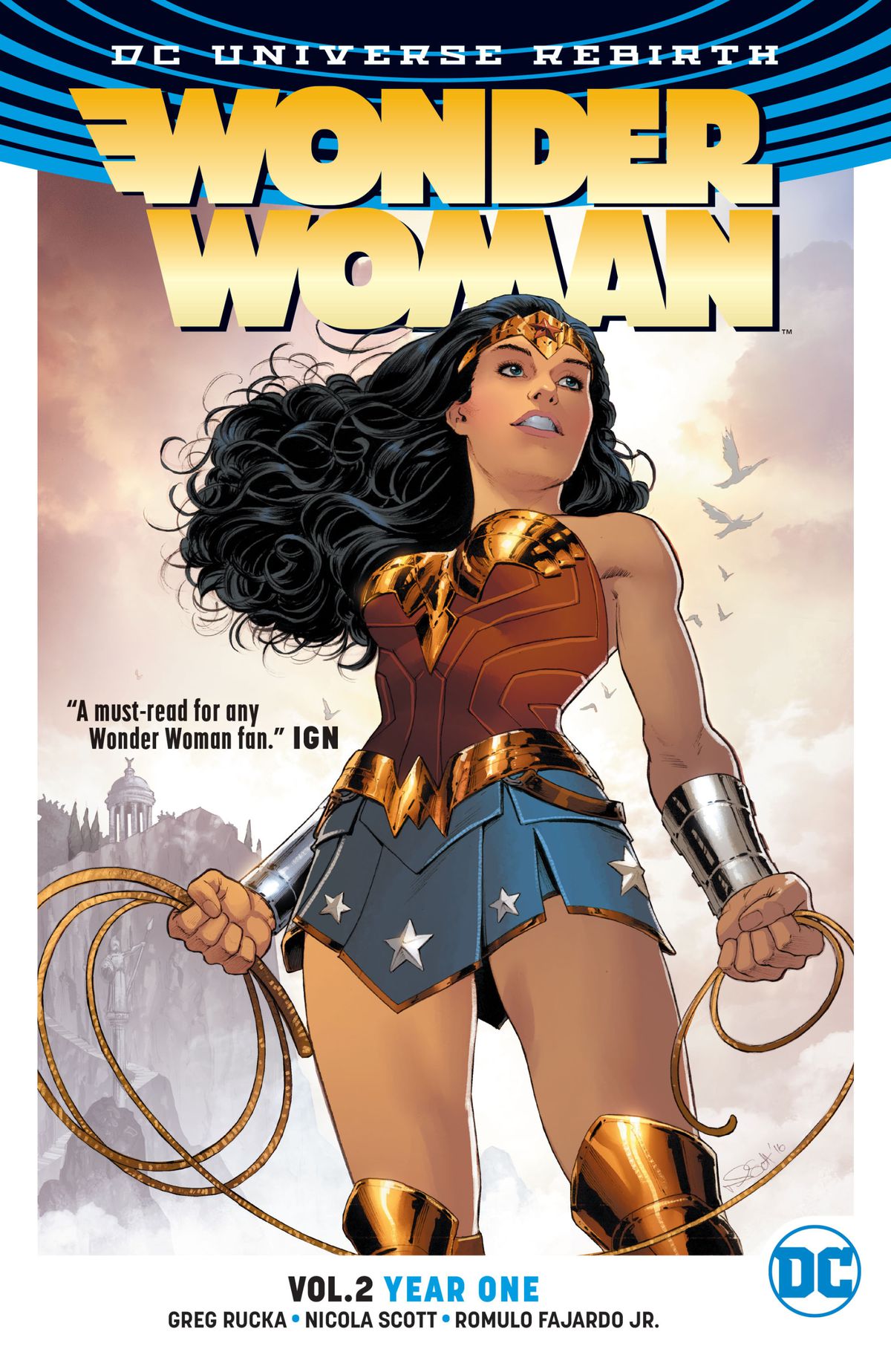
Image: Nicola Scott/DC Comics
Wonder Woman’s origin story
Wonder Woman: Year One
Greg Rucka and Nicola Scott
Wonder Woman’s origins have been retold several times over the decades, and Rucka and Scott capture the best elements of each in Year One. The classic beats remain in this modern take, from Paradise Island, to Steve Trevor, to Diana venturing into the world of men. The book builds a compelling world around Wonder Woman, as Rucka and Scott bring new life to long neglected iconic characters. It’s also stunningly gorgeous, with lush, expressive artwork on every page. And it’s canon, so everything that’s come out since is building off of this foundation.
Or start at the very beginning with:
Wonder Woman: The Golden Age Omnibus Volume 1
By William Moulton Marston and H.G. Peter
You’ll find a similar origin in the original 1940s comics, told very quickly before things take a turn toward bombastic action. Wonder Woman fought costumed villains, Axis forces, and invaders from other planets as she embodied her creator’s vision of “the new type of woman who should […] rule the world.” This volume also contains a staggering amount of bondage imagery, and the combination of feminism and fetishism is as fascinating as it is bizarre.
But if that sounds too weird, try:
The Legend Of Wonder Woman
By Renae De Liz and Ray Dillon
Set in the 1940s, De Liz and Dillon take the broad strokes of Marston and Peter’s work and craft a new, immersive adventure using contemporary storytelling techniques. It’s a clever reinvention with lovely art that retains the positive messages of the original Wonder Woman.
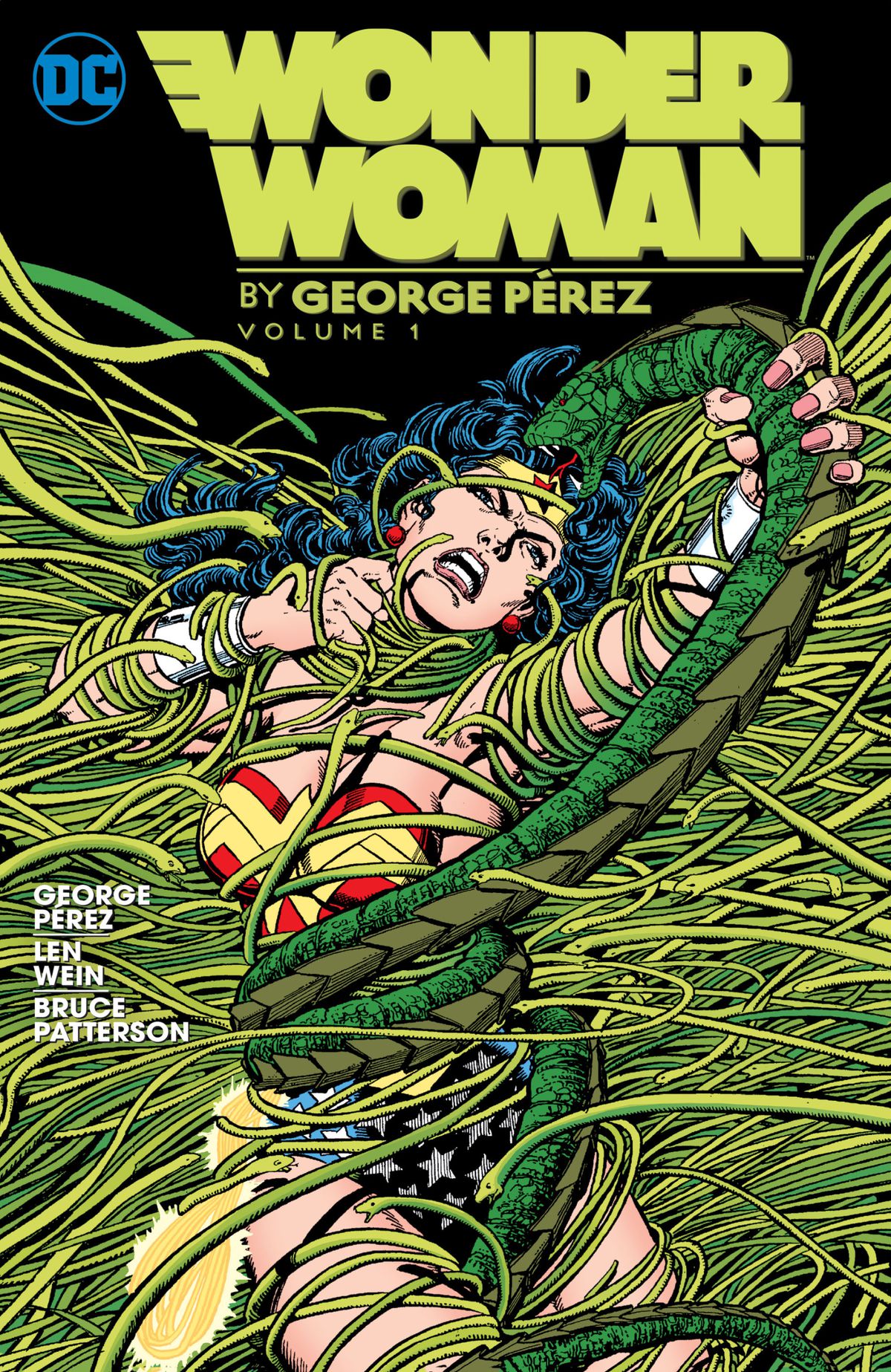
Image: George Pérez/DC Comics
A Wonder Woman deep dive
Wonder Woman #1-62
By George Pérez and assorted co-writers and artists
After decades of confusing continuity, George Pérez set Wonder Woman right in 1987 with a reboot that focused on her mythological roots and a new supporting cast of complex female characters, along with some innovative reimaginings of her classic villains. Pérez’s love and respect for the character shines through every page, and the result is an epic run that established the modern Wonder Woman and continues to serve as inspiration for every comic, cartoon, and movie that’s followed.
Next, try:
Wonder Woman #14-44
By Gail Simone, Terry Dodson, Rachel Dodson, and more
Following an iconic stint on Birds of Prey, Gail Simone took over Wonder Woman in 2008 with artists Terry and Rachel Dodson. Their first arc, “The Circle,” is a great story that digs into a dark aspect of Diana’s past and the history of the Amazons, and the book remains strong throughout. Wonder Woman goes to space, battles Genocide and the Olympian, and is visited by Black Canary, the Green Lantern Corps, and Power Girl over the course of this beloved run.
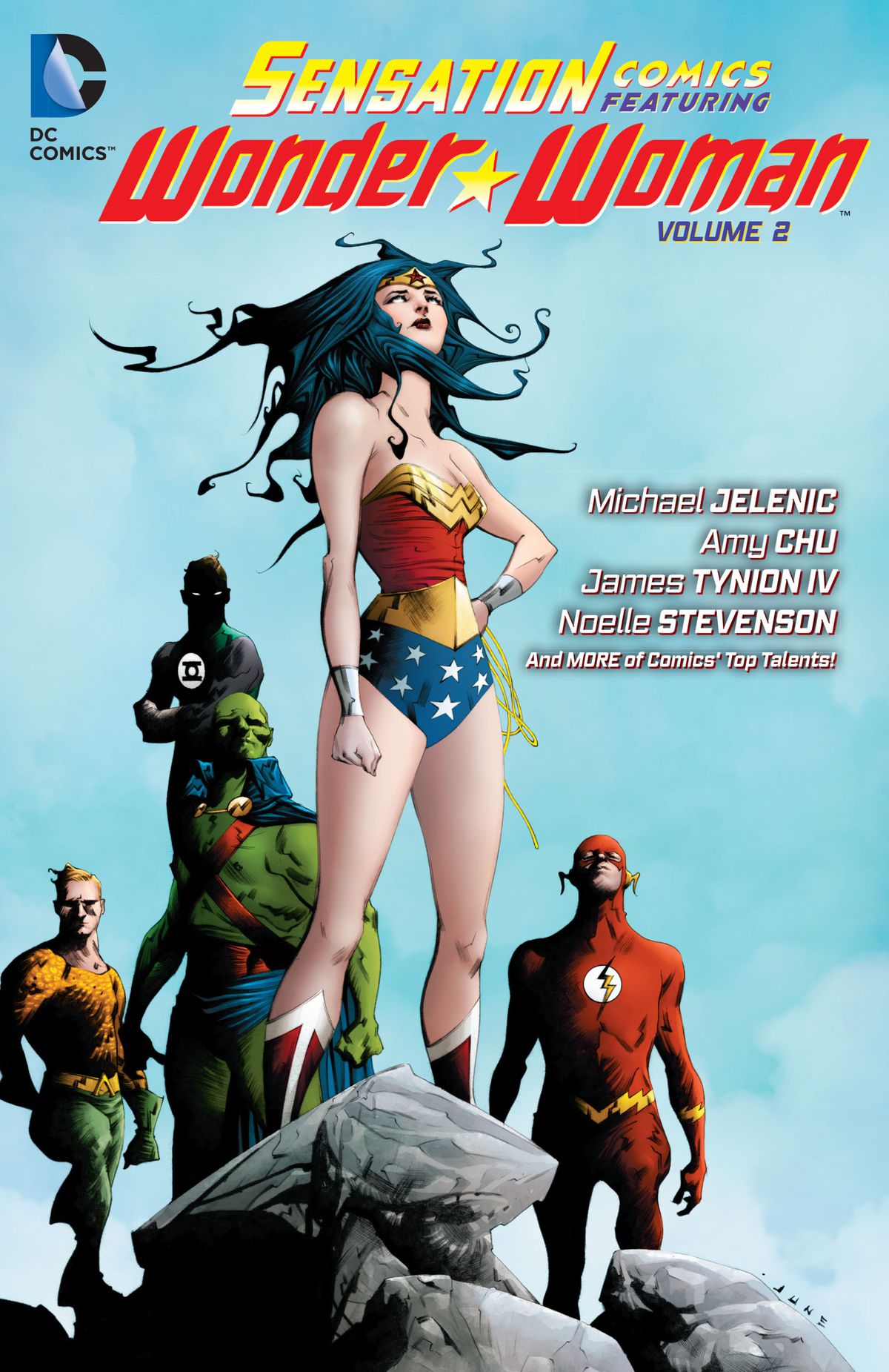
Image: Jae Lee/DC Comics
Wonder Woman and her friends
Sensation Comics Featuring Wonder Woman Volume 2
By Amy Chu, Noelle Stevenson, and more
Sensation Comics features standalone stories from a wide array of creators, and each volume is definitely worth a read. The second outing is a high point, with guest spots from Big Barda and Lois Lane, along with astronauts, dragons, and more. Two stories are particular standouts: Lauren Beukes and Mike Maihack’s adorable take on Wonder Woman vs. the Cheetah, and James Tynion IV and Noelle Stevenson exploring teen Diana’s first visit to the outside world.
For some Etta Candy Fun, try:
Wonder Woman: Heart Of The Amazon
By Shea Fontana, Mirka Andolfo, and David Messina
You can never go wrong with Etta Candy, and this story dives into the modern version of the character, showcasing her family, her close relationship with Diana, and her battle skills as the duo team up against a squad of bounty hunters. Wonder Woman doesn’t have a lot of close friends, and Fontana, Andolfo, and Messina encapsulate why Etta’s been such an important confidante for Diana over the decades.
And for nearly every heroine in the Dc Universe, try:
“Judgment In Infinity,” Wonder Woman #291-293
By Paul Levitz, Roy Thomas, Gene Colan, and more
This three-part story from 1982 marks the first all-female team up at DC Comics, as Wonder Woman was joined by Black Canary, the Huntress, Lois Lane, Madame Xanadu, Phantom Lady, Power Girl, Raven, Starfire, Supergirl, Wonder Girl, and Zatanna. Their foes? Just an omnipotent alien sent to judge humanity and the Four Horsemen of the Apocalypse. Nothing they couldn’t handle.
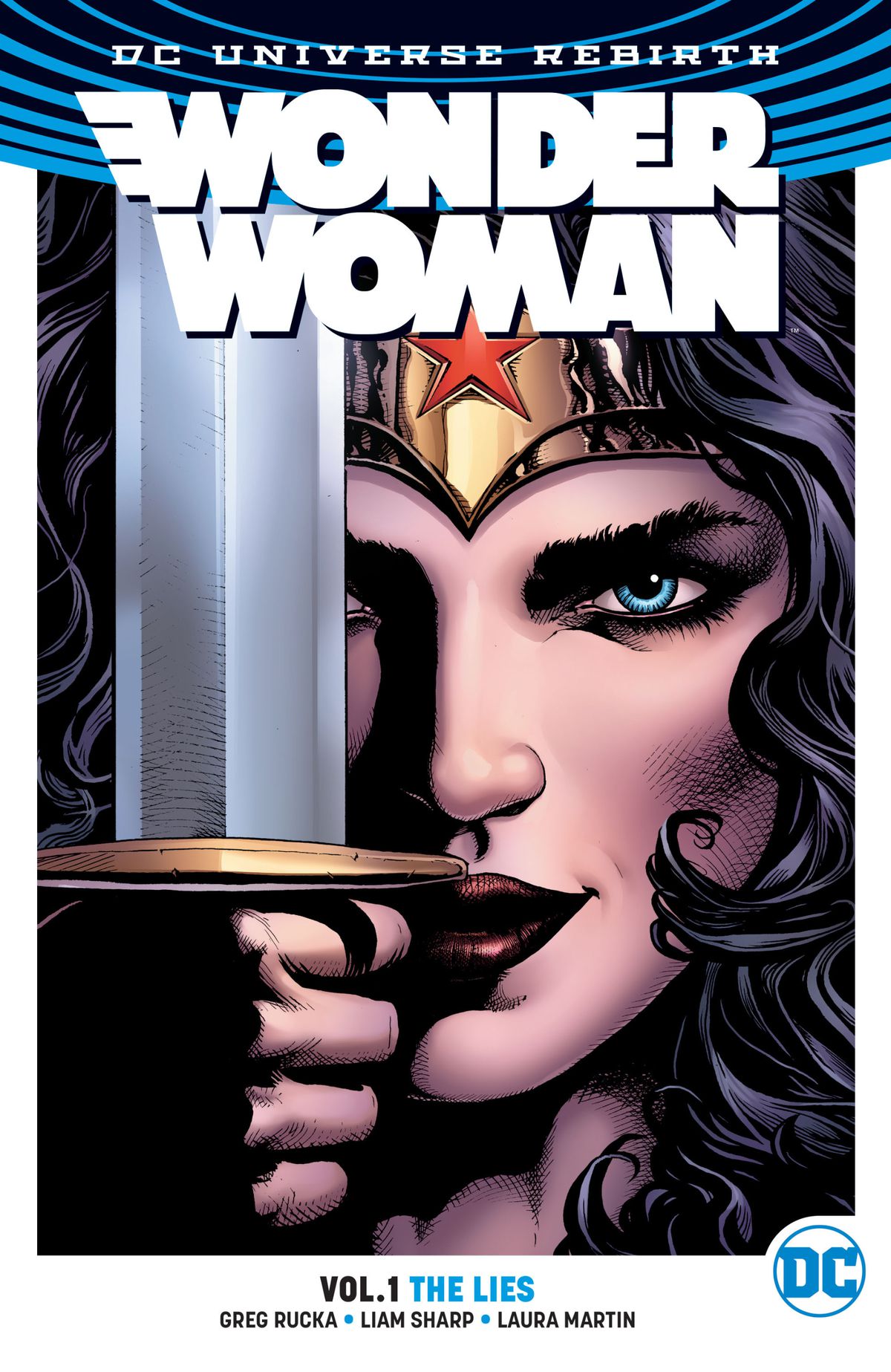
Image: Liam Sharp/DC Comics
Wonder Woman Vs The Cheetah
Wonder Woman: The Lies
By Greg Rucka and Liam Sharp
There have been a lot of different Cheetahs over the years, but Rucka and Sharp’s bestial take on the character is more dangerous and sympathetic than any we’ve seen before. “The Lies” stands as the first chapter of the ongoing tragedy of Diana and Barbara Ann Minerva.
Next, go back to Dr. Cyber:
Wonder Woman #178-203
By Denny O’Neil, Mike Sekowsky, and Dick Giordano
When Wonder Woman gave up her superpowers in her “Mod Era” in 1968, she was ready to leave heroics behind until the mysterious Dr. Cyber killed her boyfriend, Steve Trevor. Over the next few years, Diana searched the globe to get revenge in this unusual era for the character.
Go back even further for Dr. Psycho:
Wonder Woman #5
By William Moulton Marston and H.G. Peter
In this Golden Age tale, Dr. Psycho makes his first appearance and uses his mystical powers to try to keep American women out of the war. That sits poorly with Wonder Woman, who takes on the diminutive misogynist and comes out strong for the WAACs and the WAVES.
Go big with Giganta:
Wonder Woman: Love Is A Battlefield
By G. Willow Wilson, Cary Nord, and Xermanico
Wonder Woman and Giganta have a whole fremeny thing, and it’s on enjoyable display here as they battle craggy titans in the Rockies. Also, keep reading this volume for the introduction of Atlantiades, a non-binary deity who proves to be a fascinating foil for Diana.
And get into serious danger with Max Lord:
Superman: Sacrifice
By Greg Rucka, Rags Morales, and more
Wonder Woman has to step in when Max Lord takes control of Superman, and the villain’s ruthlessness forces her to make a decision that shocks her fellow heroes. The story is a gripping examination of the lengths Wonder Woman is willing to go for the greater good.
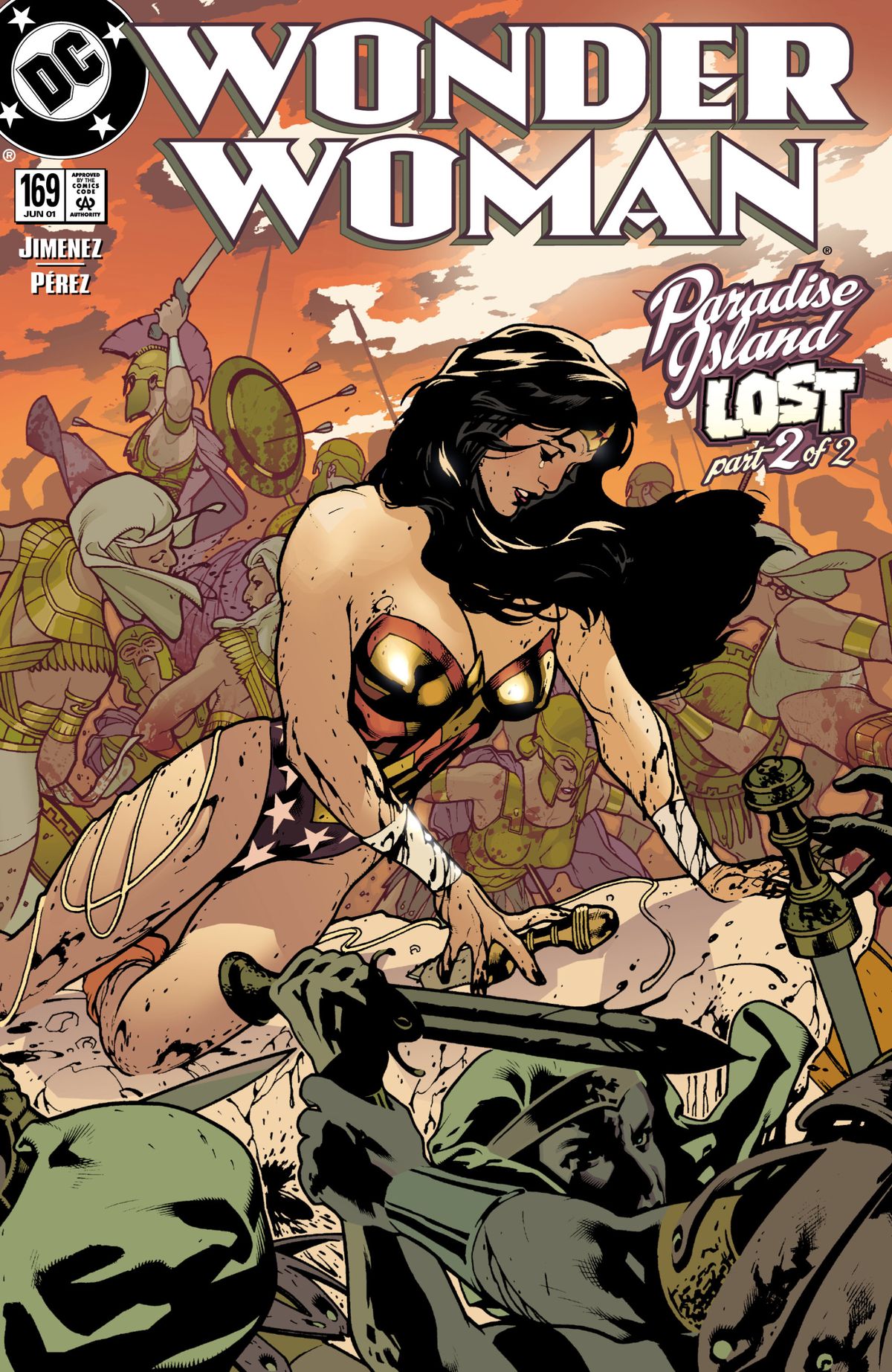
Image: Adam Hughes/DC Comics
Wonder Woman and Greek mythology
Wonder Woman: Paradise Lost
By J.M. DeMatteis, Phil Jimenez, and more
What happens when Greek gods take over Gotham City and find hosts in the Joker, Poison Ivy, and Scarecrow? Batman realizes he’s out of depth and calls in Wonder Woman, that’s what. Things go from bad to worse when the deities take over Batman, Nightwing, and Robin, leaving Wonder Woman to save the city on her own. Phil Jimenez had a fantastic run on Wonder Woman in the early 2000s, and this outlandish outing is one of many highlights.
And to get even weirder, try:
Wonder Woman #1-35
By Brian Azzarello, Cliff Chiang, and more
This is an uneven run, especially when it comes to the Amazons. But the artwork is astounding, and never more so than when Chiang and Tony Akins go wild redesigning the Greek pantheon. Each deity is over the top, both in character and appearance, offering something different from what we usually see in the comics and Greek mythology generally. Come for sea monster Poseidon, but stay for arch-villain brought down to earth Hera.
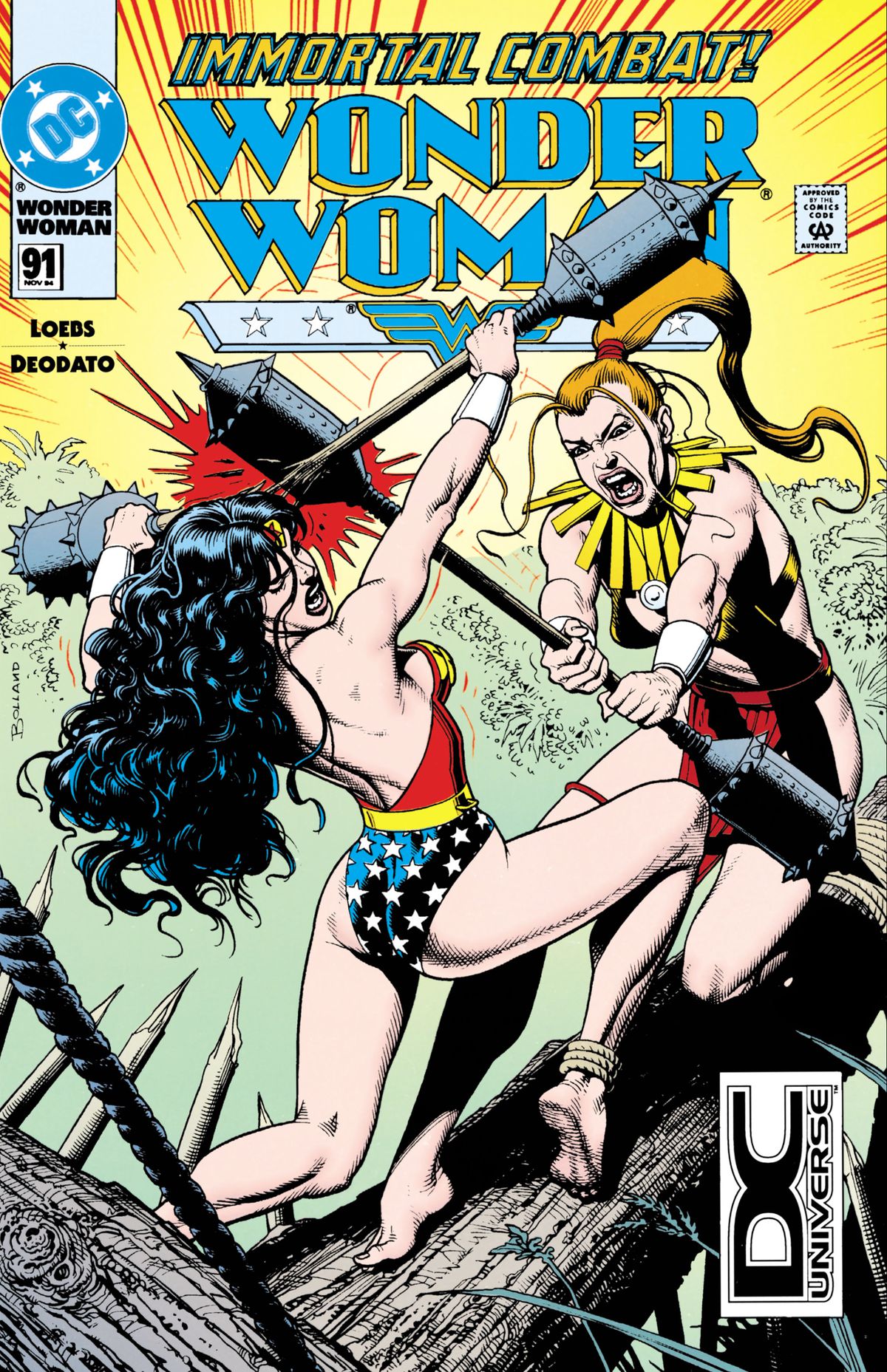
Image: Brian Bolland/DC Comics
Challengers to the Wonder Woman tiara
Wonder Woman: The Contest
By William Messner-Loebs and Mike Deodato Jr.
Diana wasn’t the only Wonder Woman. Artemis, a member of the Amazon splinter group Bana-Mighdall, challenged her for the title in the early 1990s and won. The art is ridiculous, a perfect snapshot of the hyper-sexualization that defined this era in comics, but Artemis represented an intriguing, alternative approach to the classic Amazonian ethos. The Contest made her a fan favorite character who’s remained part of the DC universe ever since.
And also try:
“The Second Life Of The Original Wonder Woman,” Wonder Woman #204
By Robert Kanigher, Don Heck, and Dick Giordano
When Diana returned as Wonder Woman in 1973 following her “Mod Era,” she was immediately challenged by Nubia, her long lost sister who claimed to be the true Wonder Woman. This initial antagonism gave way to friendship in the issues that followed, and the story is notable for introducing the series’ first recurring Black character, though she’s been woefully underutilized in the decades since.
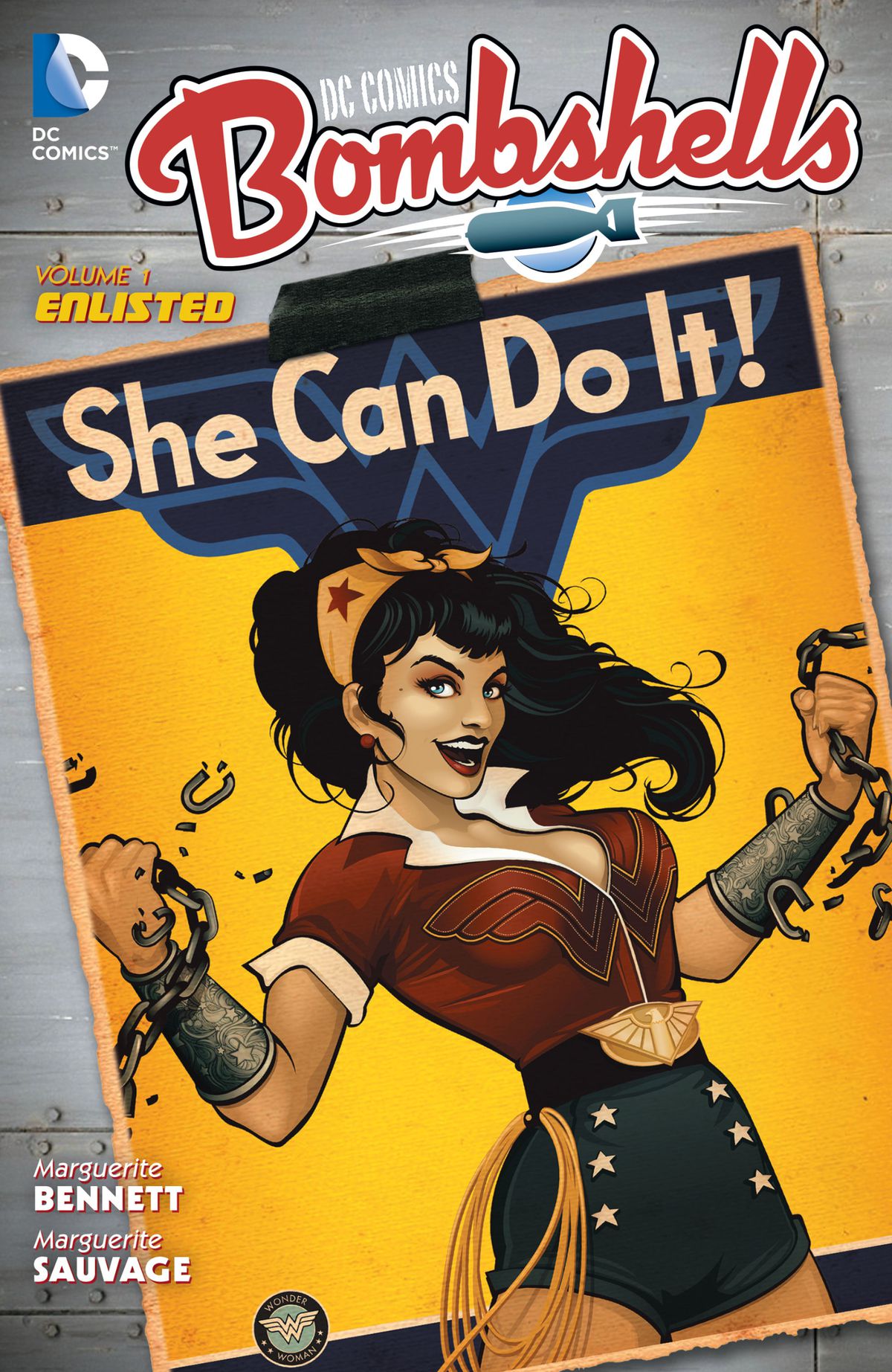
Image: Ant Lucia/DC Comics
Wonder Woman in the multiverse
DC Comics Bombshells
By Marguerite Bennett, Marguerite Sauvage, and more
Imagine a world without Batman and Superman, where female superheroes team up in the 1940s to fight World War II! Bennett and a team of great artists craft a beautiful, exciting, and often moving story that highlights the best of DC’s heroines. Wonder Woman is a pillar of the group, leading the charge against the Nazis and their supernatural confederates, including classic Wonder Woman villains like Paula von Gunther and Priscilla Rich.
“Wonder Woman,” Wednesday Comics
By Ben Caldwell
A weekly anthology printed to resemble a Sunday newspaper comics insert, Wednesday Comics was a fantastic showcase for a host of brilliant creative teams, but no one made better use of the space than Ben Caldwell. Caldwell went small when others went big, filling his “Wonder Woman” feature with exquisite detail and crafting an epic, magical story that reads like 120 pages instead of just 12. Wednesday Comics isn’t available digitally, but the single issues are worth tracking down and the massive collected edition is absolutely spectacular.
DC: The New Frontier
By Darwyn Cooke
Wonder Woman serves as the conscience of Cooke’s magnificent reimagining of the dawn of DC’s Silver Age in the mid-1950s. Originally an agent of the American government’s Cold War campaigns, she strikes out on her own path and sides with the forgotten innocents instead, putting her at odds with her superpowered associates until the world needs her again. Cooke’s artwork is amazing throughout, including a stunning sequence with the invisible jet, while “There’s the door, spaceman,” remains one of the best Wonder Woman lines of all time.
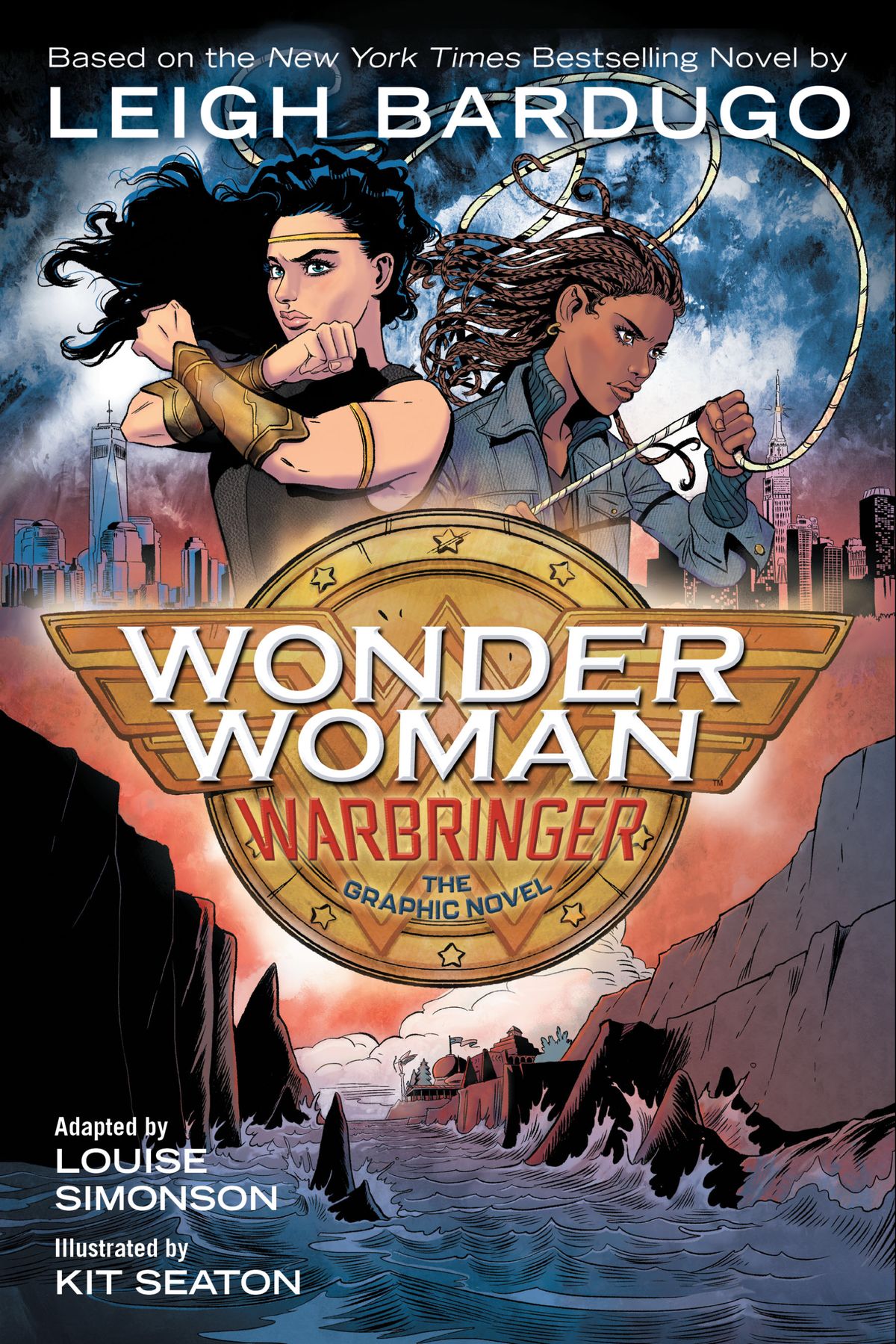
Image: Kit Seaton/DC Comics
Wonder Woman comics for teens
Wonder Woman: Warbringer
By Leigh Bardugo, Louise Simonson, and Kit Seaton
Leigh Bardugo is known for her best-selling Grisha-verse novels, but she dropped into the DC universe for Wonder Woman: Warbringer, a YA novel that’s since been adapted into a graphic novel by Simonson and Seaton. When teen Diana encounters Alia, a young woman with a dangerous lineage, she leaves her Amazonian home to journey into the world beyond and protect Alia from foes that want her dead or under their control. With a compelling supporting cast and lots of action, the story showcases the heroic heart of Diana, even at this young age.
Wonder Woman comics for pre-teens
Diana: Princess Of The Amazons
By Shannon Hale, Dean Hale, and Victoria Ying
Diana is young and alone, the only child on an island of busy, grown Amazons, so she crafts herself a friend. It seems like a fun plan until things start to get out of hand when her new pal turns out to be rather mischievous, maybe even dangerous. The story is cute and engaging, a wonderful introduction to the character for young readers that hints at the compassionate heroine Diana will become.
Tim Hanley is a comic book historian and the author of Wonder Woman Unbound, Investigating Lois Lane, The Many Lives of Catwoman, and Betty and Veronica: The Leading Ladies of Riverdale.
